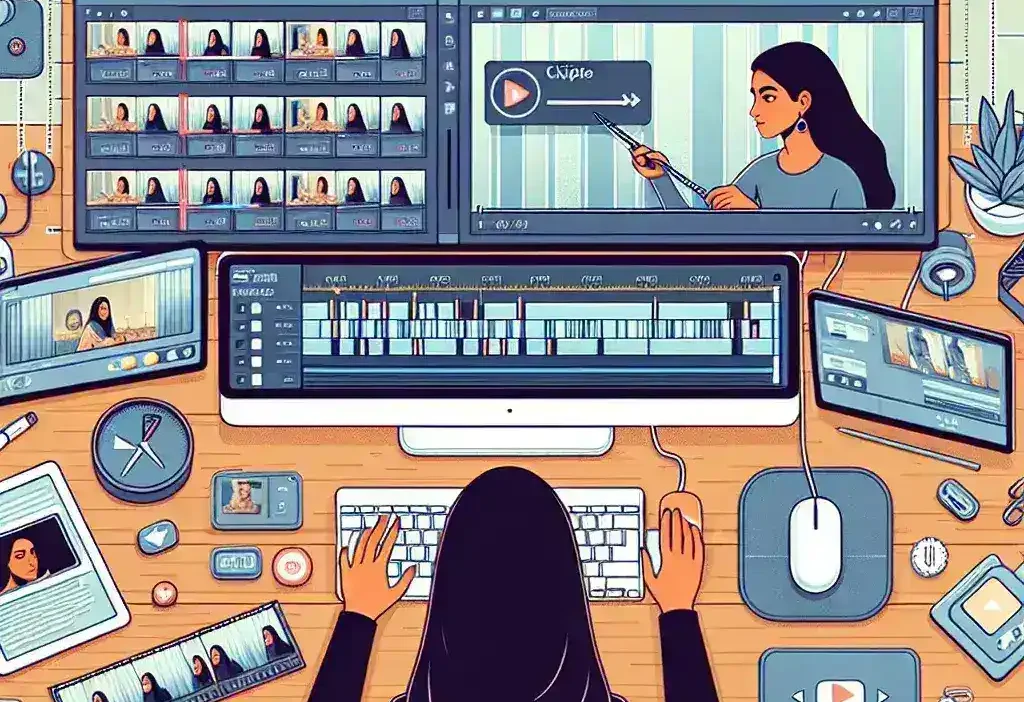In today’s fast-paced digital landscape, viewer attention spans are shorter than ever. Long-form video content, while valuable, can often overwhelm audiences who prefer bite-sized, easily digestible segments. This comprehensive guide explores the art and science of splitting lengthy videos into organized chapters, transforming unwieldy content into structured, viewer-friendly experiences.
Understanding the Importance of Video Chapters
Video chaptering has emerged as a crucial content strategy for creators across platforms. When you divide extensive footage into logical segments, you’re essentially creating a roadmap for your audience. This approach mirrors how we naturally consume information – in organized, thematic chunks rather than overwhelming streams.
The psychological impact of chapters cannot be understated. Viewers feel a sense of progress and accomplishment as they move through clearly defined sections. This structured approach reduces cognitive load and increases completion rates, ultimately benefiting both creators and audiences.
Popular Methods for Video Segmentation
Manual Splitting Using Video Editing Software
Professional video editing applications offer the most control over chapter creation. Adobe Premiere Pro, Final Cut Pro, and DaVinci Resolve provide sophisticated tools for precise video segmentation. These platforms allow creators to identify natural break points, add chapter markers, and export individual segments with consistent quality.
The manual approach requires careful consideration of content flow. Effective chapter breaks typically occur during natural pauses, topic transitions, or when addressing different aspects of a subject. This method demands time investment but yields the highest quality results.
Automated Splitting Solutions
Artificial intelligence has revolutionized video processing, introducing automated splitting capabilities that analyze content patterns. Tools like Kapwing, Loom, and Descript use machine learning algorithms to identify optimal split points based on audio cues, visual changes, and content analysis.
These solutions prove particularly valuable for educational content, webinars, and presentations where topic transitions are clearly defined. While not always perfect, automated tools significantly reduce the time investment required for basic segmentation tasks.
Platform-Specific Chaptering Strategies
YouTube Chapter Implementation
YouTube’s native chapter feature has transformed how creators organize long-form content. By adding timestamps in video descriptions, creators can automatically generate interactive chapter markers that appear in the progress bar. This functionality enhances user experience by enabling direct navigation to specific topics.
To implement YouTube chapters effectively, timestamps must follow specific formatting rules. Each chapter requires a minimum duration of ten seconds, and the first timestamp must begin at 0:00. Chapter titles should be descriptive and keyword-optimized to improve discoverability.
Social Media Platform Considerations
Different social platforms have varying optimal video lengths and engagement patterns. Instagram favors shorter segments, typically under 60 seconds for maximum reach. TikTok thrives on ultra-short, punchy content that captures attention immediately.
When adapting long-form content for these platforms, creators must identify the most compelling moments and create standalone segments that work independently while maintaining connection to the broader narrative.
Technical Aspects of Video Splitting
Maintaining Quality During Segmentation
One critical challenge in video splitting involves preserving original quality throughout the process. Each re-encoding operation potentially degrades video quality, making it essential to use lossless splitting methods when possible.
Professional editors recommend using codec-aware splitting tools that cut videos at keyframes without re-encoding. This approach maintains original quality while creating clean segment boundaries. Tools like FFmpeg offer command-line solutions for technical users seeking maximum control over the splitting process.
File Management and Organization
Systematic file naming conventions become crucial when managing multiple video segments. Establishing clear naming patterns helps maintain organization and facilitates easy retrieval of specific chapters. Consider including the original video title, chapter number, and brief content description in each filename.
Cloud storage solutions like Google Drive, Dropbox, or dedicated media management platforms ensure accessibility across devices and team members. Proper organization prevents confusion and streamlines the content distribution process.
Strategic Considerations for Chapter Creation
Content Analysis and Planning
Before beginning the splitting process, conduct thorough content analysis to identify natural division points. Educational videos might split by learning objectives, while entertainment content could divide by story arcs or comedic segments.
Creating a content outline before filming can streamline the post-production chaptering process. When creators plan chapter breaks during the scripting phase, they can incorporate natural transitions and pauses that facilitate clean segmentation.
Audience Engagement Optimization
Chapter creation should prioritize audience engagement over arbitrary time divisions. Analyze viewer retention data to understand where audiences typically drop off, then strategically place chapter breaks to re-engage viewers at these critical moments.
Interactive elements like polls, questions, or calls-to-action work particularly well at chapter boundaries, creating natural engagement opportunities that encourage continued viewing.
Advanced Techniques and Best Practices
Cross-Platform Content Adaptation
Modern content creators often distribute across multiple platforms, each with unique requirements and audience expectations. Developing a master chapter structure that can be adapted for various platforms maximizes content value while minimizing production overhead.
This approach involves creating comprehensive chapters that can be further subdivided for shorter-form platforms or combined for longer-form presentations. Flexibility in chapter design enables efficient content repurposing across diverse distribution channels.
SEO Optimization for Video Chapters
Search engine optimization extends beyond traditional web content to include video segments. Each chapter represents an opportunity to target specific keywords and topics, potentially improving overall content discoverability.
When creating chapter titles and descriptions, incorporate relevant keywords naturally while maintaining readability and accuracy. This practice helps search engines understand content structure and can improve ranking for topic-specific queries.
Tools and Software Recommendations
Free and Budget-Friendly Options
Content creators working with limited budgets can leverage several free tools for basic video splitting. OpenShot, Shotcut, and VSDC Free Video Editor provide essential splitting functionality without financial investment.
These tools offer sufficient capabilities for straightforward segmentation tasks, though they may lack advanced features found in professional software. For creators just beginning their video splitting journey, these options provide excellent learning platforms.
Professional-Grade Solutions
Established creators and businesses benefit from investing in professional video editing software that offers advanced chaptering features. These tools provide greater precision, automation options, and integration capabilities that streamline workflow efficiency.
The investment in professional tools often pays dividends through time savings and enhanced output quality. Consider factors like team collaboration features, cloud integration, and export options when selecting professional software.
Measuring Success and Optimization
Analytics and Performance Tracking
Successful video chaptering requires ongoing analysis and optimization based on performance metrics. Monitor viewer engagement patterns, completion rates, and chapter-specific analytics to understand which segmentation strategies resonate with your audience.
Platform analytics provide valuable insights into viewer behavior, revealing which chapters generate the most engagement and where audiences typically exit. This data informs future chaptering decisions and content structure improvements.
Iterative Improvement Strategies
Video chaptering is an evolving skill that improves through practice and experimentation. Regularly review and refine your approach based on audience feedback and performance data.
Consider conducting A/B tests with different chapter structures to identify optimal segmentation strategies for your specific content type and audience preferences. This scientific approach to content optimization yields measurable improvements over time.
Future Trends and Considerations
The landscape of video consumption continues evolving, with emerging technologies like artificial intelligence and machine learning reshaping how we create and consume chaptered content. Interactive video experiences and personalized content delivery represent exciting frontiers for video chaptering innovation.
As attention spans continue fragmenting and consumption habits shift toward on-demand, topic-specific viewing, mastering video chaptering becomes increasingly valuable for content creators seeking to maximize audience engagement and retention.
Understanding these techniques and implementing them strategically positions creators for success in an increasingly competitive digital content landscape. Whether you’re an educator, marketer, or entertainer, effective video chaptering can significantly enhance your content’s impact and reach.




